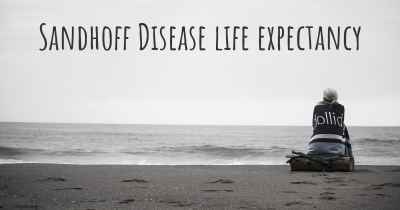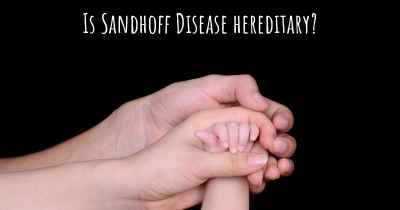What is the history of Sandhoff Disease?
When was Sandhoff Disease discovered? What is the story of this discovery? Was it coincidence or not?

Sandhoff Disease: A Devastating Genetic Disorder
Sandhoff disease, also known as GM2 gangliosidosis type 2, is a rare and progressive genetic disorder that affects the central nervous system. It is named after the two Canadian physicians, Konrad Sandhoff and Heinrich Sandhoff, who first described the disease in 1968. Sandhoff disease is classified as a lysosomal storage disorder, which means it is caused by the accumulation of harmful substances within the lysosomes of cells.
Discovery and Early Research
The discovery of Sandhoff disease can be traced back to the late 1960s when Dr. Konrad Sandhoff and Dr. Heinrich Sandhoff were conducting research on Tay-Sachs disease, another lysosomal storage disorder. While studying the biochemistry of Tay-Sachs disease, they identified a deficiency of a specific enzyme called hexosaminidase A (Hex A) in affected individuals. However, they noticed that some patients with similar symptoms lacked both Hex A and another enzyme called hexosaminidase B (Hex B).
Classification and Genetic Basis
Further investigations led to the classification of Sandhoff disease as a distinct disorder, separate from Tay-Sachs disease. The disease is inherited in an autosomal recessive manner, meaning that both parents must carry a mutated gene for their child to be affected. The responsible gene, HEXB, is located on chromosome 5 and encodes the beta subunit of Hex A and Hex B enzymes.
Clinical Presentation and Symptoms
Sandhoff disease primarily affects the nervous system, leading to a wide range of symptoms that typically appear in infancy or early childhood. The disease is characterized by progressive neurodegeneration, resulting in the deterioration of motor skills, muscle weakness, and intellectual disability. Other common symptoms include seizures, loss of vision and hearing, cherry-red spot on the retina, and an enlarged liver and spleen.
Pathophysiology and Biochemical Defect
The underlying cause of Sandhoff disease lies in the deficiency of Hex A and Hex B enzymes, which are responsible for breaking down a fatty substance called GM2 ganglioside. In affected individuals, the accumulation of GM2 ganglioside occurs primarily in the brain and spinal cord, leading to the destruction of nerve cells. This progressive damage ultimately results in the severe neurological symptoms observed in Sandhoff disease.
Diagnosis and Genetic Testing
Diagnosing Sandhoff disease involves a combination of clinical evaluation, biochemical testing, and genetic analysis. The measurement of Hex A and Hex B enzyme activity in blood or other tissues can help differentiate Sandhoff disease from other similar disorders. Genetic testing can confirm the presence of mutations in the HEXB gene, providing a definitive diagnosis.
Treatment and Management
Unfortunately, there is currently no cure for Sandhoff disease. Treatment primarily focuses on managing symptoms and providing supportive care to improve the quality of life for affected individuals. This may involve physical therapy, occupational therapy, and medications to control seizures and other associated complications.
Research and Future Perspectives
Advancements in genetic research and understanding of lysosomal storage disorders have paved the way for potential therapeutic approaches. Experimental treatments such as enzyme replacement therapy, gene therapy, and substrate reduction therapy are being explored in preclinical and clinical studies. While these approaches hold promise, further research is needed to develop safe and effective treatments for Sandhoff disease.
Conclusion
Sandhoff disease is a devastating genetic disorder that affects the central nervous system, leading to progressive neurodegeneration and severe neurological symptoms. The discovery and classification of this disorder by Dr. Konrad Sandhoff and Dr. Heinrich Sandhoff have been instrumental in understanding its underlying causes. Although there is currently no cure, ongoing research offers hope for future treatments that may improve the lives of individuals affected by Sandhoff disease.








